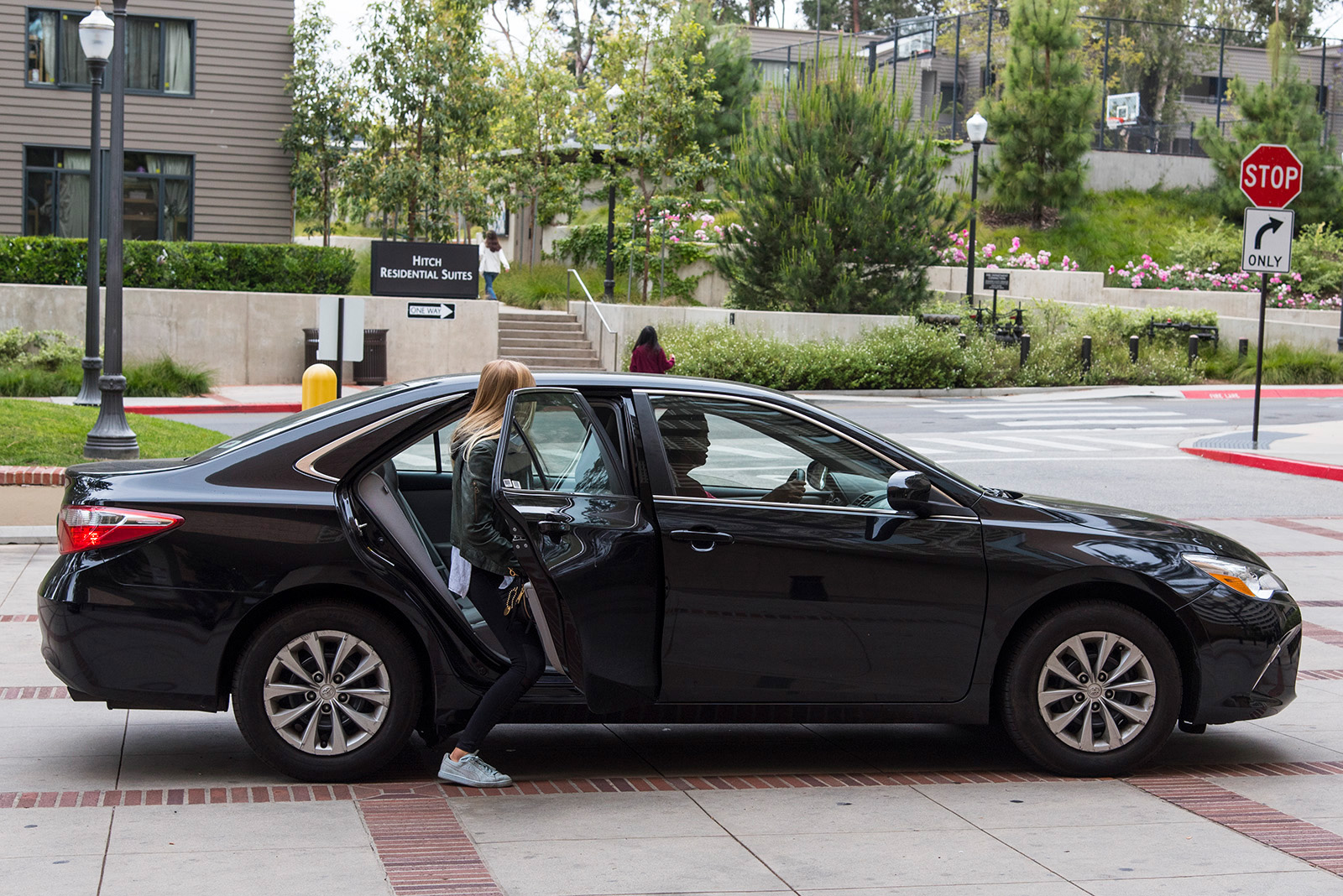Popularity of brief Uber, Lyft rides on campus raises environmental concerns

Some researchers are worried about the environmental effect of unnecessary Uber and Lyft rides. (Daily Bruin file photo)
By Manya Kidambi
Jan. 29, 2019 1:01 a.m.
This post was updated Feb. 1 at 1:27 p.m.
UCLA students call about 11,000 Uber and Lyft rides that never leave campus every week, raising concerns about the environmental impact of unnecessary trips.
UCLA Transportation determined this number using data provided by the two ride-hail companies, said Abdallah Daboussi, senior administrative planning and policy analyst at UCLA Transportation.
Even though these are short trips, they still produce a large amount of carbon emissions, said Yifang Zhu, associate director of the Center for Clean Air and an environmental health sciences professor.
Tailpipe emissions are responsible for releasing various types of pollutants in most cars, she said. Typical chemical pollutants include carbon monoxide, particulate matter and nitrogen oxide.
“The pollutants coming out of the tailpipe heavily contribute to Los Angeles’ smog problem,” Zhu said.
Smog can also lead to a wide range of adverse health effects, including cardiovascular disease, respiratory disease, lung disease and premature death, she said.
CJ Macklin, a Lyft spokesperson, said Lyft recognizes the need to prevent climate change, and that all Lyft rides across the country are now carbon neutral. He added that Lyft has invested millions of dollars in carbon offsets, such as renewable energy programs and forestry projects, to cancel out the carbon emissions from their rides.
“It’s just one way we are seeking a balance between providing a great transportation option for riders and protecting our planet,” he said.
Uber did not immediately respond to requests for comment.
The short length of the trips may not be the only cause of increased emissions on campus, Zhu said. Drivers waiting for student riders with their engines on may also be part of the problem.
“Even if they are just circling around on campus waiting for customers to get in a car, there are likely to be emissions that are associated with the trips,” Zhu said.
She said the emissions that result from circling around campus while waiting for riders could potentially be greater than the emissions from the trips themselves.
“They go between classes, which is really bad,” she said. “In the morning, they say, ‘Oh I’m late for class, I can’t make it,’ and the Uber immediately shows up, so they must be just waiting around for students to get in.”
Alana Sur, a first-year psychobiology student, said her roommates have taken Ubers to their classes before, but only when it rained outside or when one injured their ankle.
“In those situations, it’s understandable, but otherwise, in a normal situation, you don’t need to be taking an Uber to class,” Sur said.
Sawsan Ezzedin, a fourth-year English and political science student, said she takes Ubers to class about three times a week.
“I prefer sleeping in over walking and getting home as quickly as possible,” she said.
Zhu said it is important to consider the various reasons why people engage in this practice in order to find a solution.
“We would need to look at evidence from different aspects, (as well as) feedback,” Zhu said. “If so many Ubers are being used, there must be some rational reason.”


